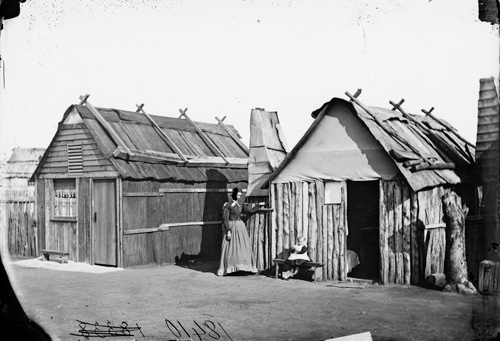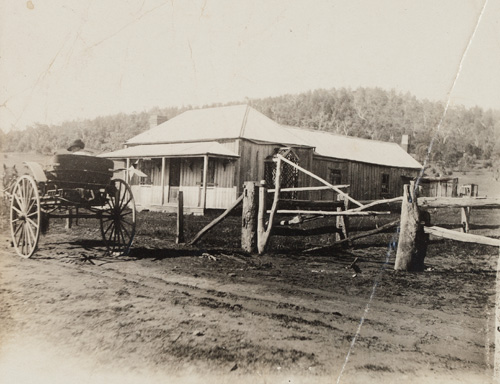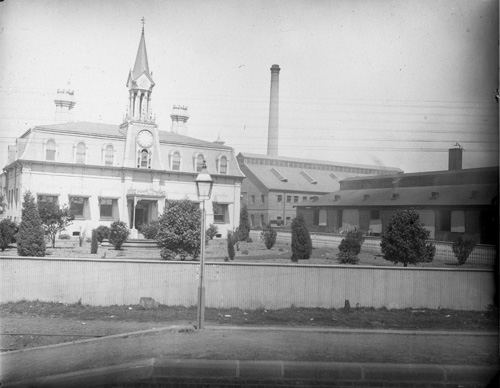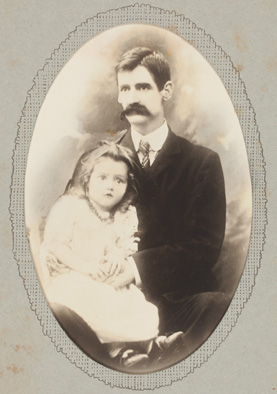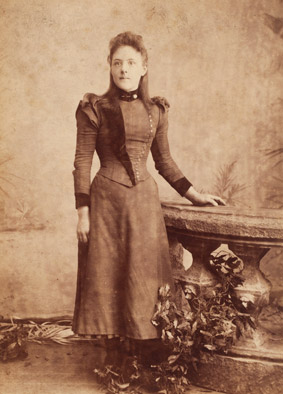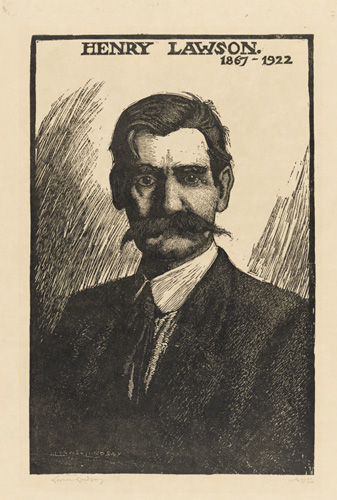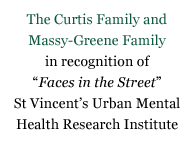Henry Lawson – the man, his work and the legend
Henry Archibald Lawson was born in a tent at Grenfell, NSW, on 17 June 1867. His father, a Norwegian seaman named Nils (Peter) Larsen (1832-1888), had jumped ship in Melbourne in 1855 to try his luck on the Australian goldfields. In 1866, Peter married 18 year-old Louisa Albury (1848-1920), anglicising his surname to Lawson with the birth of Henry, the first of the couple's four surviving children.
The Lawson family moved often during Henry’s early childhood, following each new rush for gold. In 1871, they settled at Eurunderee, near Mudgee, where Peter built the two-roomed timber house Henry would later describe in many of his stories.
Henry Lawson received only three years formal education. Louisa often needed help to run the family selection when Peter's building work took him away from home. An ear infection left Henry partially deaf and, by 14, he had lost much of his hearing. In later life Lawson wrote that his deafness, 'was to cloud my whole life, to drive me into myself, and to be, in great measure responsible for my writing'. Also quite shy, Lawson was bullied at school and gained much of his learning through private study and reading.
In about 1880 Henry left school to work with his father and learned to enjoy the camaraderie of working men but, fatefully, also discovered a taste for alcohol which helped him overcome his shyness.
In 1883, his parent's marriage ended and Louisa Lawson moved to Sydney to find work. Joining her, Henry took a job as a carriage painter with Hudson Brothers at Clyde, near Granville, studying for his matriculation at night. Again, he found juggling full-time work and group study difficult, and failed his university entrance exams several times.
At his mother’s urging, Henry began to write poetry and short stories. Many of Louisa Lawson’s Sydney friends held strong opinions on national politics which fuelled young Henry’s republican ideals. In October 1887, his first published poem was printed in the Bulletin, and others followed soon after. Lawson's first published short story, 'His Father's Mate', appeared in December 1888.
> Discover more about Henry Lawson's early publishing efforts

In July 1880, the Bulletin published ‘Faces in the Street’ which revealed the grim reality of urban working class Australian life. It remains one of Lawson’s most celebrated poems.
> Read more about the creation of Lawson's celebrated poem 'Faces in the Street'
When Louisa Lawson bought the Republican magazine, Henry gained further writing and editorial experience and another publishing outlet for his work. In 1888, Louisa found commercial success with her second paper, Dawn, and by 1894 she was financially able to publish Henry’s first book, Short Stories in Prose & Verse.
> See a rare copy of Henry Lawson's first book 'Short Stories in Prose and Verse'
As Lawson's reputation as a writer grew, he became a regular contributor to several popular magazines and newspapers but slipped easily into depression when he wasn’t writing, drinking heavily to suppress his insecurities.
In 1895, Angus & Robertson contracted Lawson to write two books, In the Days when the World was Wide and While the Billy Boils. He also met Bertha Bredt Jnr whom he married on 15 April 1896. With his literary reputation cemented by a swag of popular publications, Henry quickly took up a bohemian lifestyle.
Believing that London might offer more chance of earning a living as a writer, Henry sought the help of benefactors like the Governor of NSW and David Scott Mitchell and, in March 1900, the Lawsons (now with two children) left for England.
> Read more about Lawson's search for literary success
By the time the family returned home in mid 1902, Henry and Bertha’s marriage was over. Lawson’s drinking had worsened and, in March 1903, Bertha Lawson obtained a legal separation from her husband. The next phase of Lawson’s life was characterised by a downward spiral.
Suffering from depression and alcoholism, Henry made numerous visits to Darlinghurst Mental Hospital. Repeated public drunkenness and failure to pay child support led to periodic incarceration in Darlinghurst Gaol. Deeply depressed and perpetually poor, on his release from hospital or gaol, Lawson quickly reverted to his old ways.
> Find out more about Lawson's trials and tribulations in later life
Unable to function on his own, Henry was cared for through the last decades of his life by Mrs Isabel Byers, a devoted friend and fellow poet. In 1915, friends petitioned Premier Holman to get Lawson away from Sydney and he spent two years at the Yanco Irrigation Area (a prohibition zone) near Leeton, NSW. There the author revised the best of his verses for Selected Poems, published by Angus & Robertson in 1918.
> Read more about Henry Lawson's final days
In 1920, Henry Lawson was granted a lifetime pension of £1 per week from the Commonwealth Literary Fund. The following year Lawson suffered a brain haemorrhage and died several months later, on 2 September 1922, at Mrs Beyers home in Abbotsford, NSW.
Accorded a state funeral two days later, Henry Lawson was the first non-official to be thus honoured. He is buried at Waverley Cemetery, Sydney.
Already a legend in his own lifetime, Henry Lawson's literary contribution was extensively debated after his death. The real merits of his writing lie in his best short stories, although it is as a poet that he is most often remembered.
Henry Lawson's own tragic tale of disillusioned life had a detrimental effect on his work and well-being, but has become part of the literary legend we remember now. His work continues to be read by each succeeding generation and is taught in schools worldwide.
